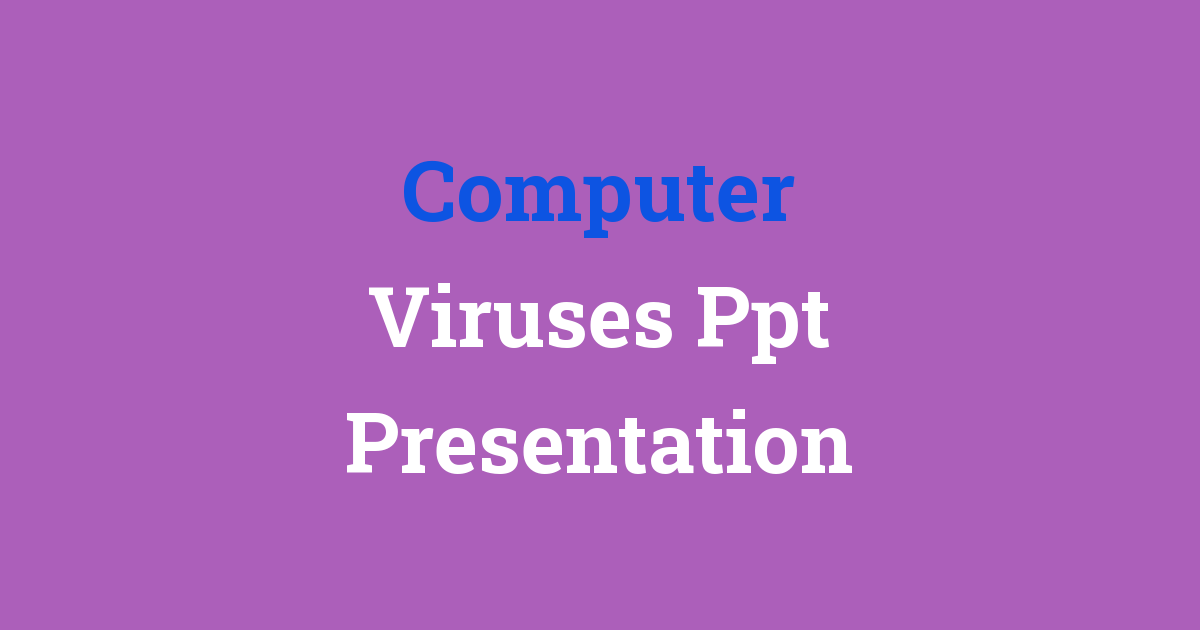Presentation about computer viruses in PowerPoint format.
Computer Viruses PPT Presentation
Introduction
In today’s digital world, computer viruses have become a significant threat to data security and privacy. With the advancement of technology, these viruses have also evolved, becoming more sophisticated and harder to detect. As a student pursuing a Bachelor of Technology in engineering, it is crucial to understand the impact of computer viruses and how to protect systems from these malicious threats.
Problem Statement
The problem with computer viruses is that they can infect systems without the user’s knowledge, causing damage to data and disrupting operations. Traditional antivirus programs are not always effective in detecting and removing these viruses, leaving systems vulnerable to attacks. As a result, there is a need for a more advanced and efficient system to combat these threats.
Existing System
The existing system of antivirus programs relies on signature-based detection to identify known viruses. However, this method is not foolproof as it requires constant updates to keep up with new virus variants. Additionally, these programs often slow down system performance and may not detect zero-day attacks, leaving systems exposed.
Disadvantages
Some of the disadvantages of the existing system include:
- Reliance on signature-based detection
- Constant updates required
- System performance impact
- Inability to detect zero-day attacks
Proposed System
The proposed system aims to address these limitations by implementing a behavior-based detection approach. This system will analyze the behavior of programs and processes in real-time to identify malicious activities indicative of a virus infection. By monitoring system behavior, the proposed system can detect new and unknown viruses without relying on signature updates.
Advantages
Some of the advantages of the proposed system include:
- Behavior-based detection
- Real-time monitoring
- Ability to detect new and unknown viruses
- Reduced reliance on signature updates
Features
The proposed system will include the following features:
- Real-time behavior analysis
- Malware sandboxing for testing suspicious programs
- Heuristic scanning to identify potential threats
- Automatic quarantine and removal of infected files
Conclusion
In conclusion, computer viruses pose a significant threat to data security and privacy in today’s digital age. As a student studying engineering, it is essential to understand the limitations of existing antivirus systems and propose more advanced solutions to combat these threats. By implementing a behavior-based detection approach, the proposed system can enhance system security and protect against new and evolving virus threats. It is crucial to stay informed about the latest developments in cybersecurity and work towards implementing proactive measures to safeguard systems from malicious attacks.

